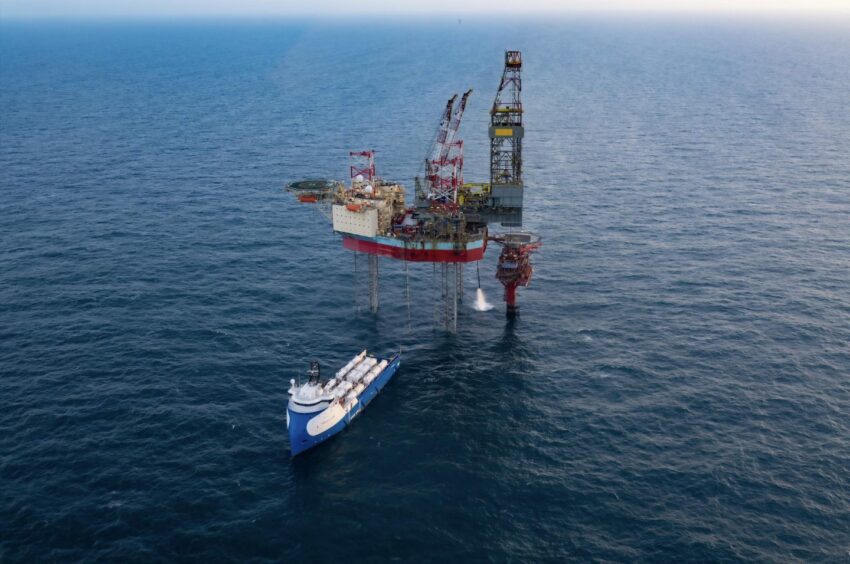
“The lack of progress with the carbon capture and storage (CCS) projects is the biggest policy failure in our efforts to mitigate the impact of climate change.” These were the words of an eminent climate scientist at the Grantham Institute, London School of Economics, in June this year.
Indeed, we have been talking about CCS for nearly two decades, and the slow progress in the number of large-scale projects in action is frustrating, particularly given its potential to reduce carbon emissions. The question is how this can be tackled to ensure CCS can play its full role in decarbonisation of the EU.
Regional roles
Let’s first look at where we are. The US has historically led the world in the use of CCS, having deployed it since the early 1970s – primarily to support enhanced oil recovery (EOR) projects. 13 out of the 15 existing CCS projects in the US support EOR, and just two relatively small projects are dedicated to geological storage.
The US Congress has directed $14.6 billion (2022 terms) to CCS-related budgets under various acts covering the 2010-2026 period. Budgets are being created to fund research and development activities with small-scale demonstration projects and storage validation and testing, totalling $5.0 billion over 2022-2026.
The EU has come to the party much later, and in recent decades has created a raft of policy and regulatory frameworks to promote and manage CCS projects.
In a significant move, in March 2023, the European Commission rolled out the Net Zero Industry Act.
This act specifically identifies CCUS – carbon capture, utilisation and storage – as a strategic net-zero technology.
According to this pivotal legislation, ramping up the manufacturing capacity of CCUS technologies is crucial if the EU is to meet its ambitious climate goals. This act also amplifies the EU’s commitment to fostering CCS development and serves as a testament to the technology’s importance in decarbonisation.
Meanwhile, the EU’s emissions trading system scheme (EU ETS) has been amended to include CCS credit if implemented. The site selection and safety assessment are ensured through the CCS Directive, a legal framework for safe geological storage of carbon dioxide in the EU and EEA countries.
Broad schemes such as the Innovation Fund (25 billion euros) and Horizon Europe (95.5 billion euros) have been set up to promote research, pilots and small-scale demonstration projects related to CCS. At the same time, the Connecting Europe Facility (25.8 billion euros) provides support for EU-wide, cross-border CO2 transport networks.
Cross-border transport may be needed, to make storage sites in the North Sea, for example, accessible to nearby countries. Other countries may need to transport their captured CO2 to sinks via long-distance pipelines.
Addressing CCS challenges
Storage remains the most challenging aspect of the CCS value chain. CO2 injection and storage requires “Goldilocks” reservoirs (porous rock structures) at the appropriate depth (800 to 2,800 metres) and a high-integrity cap rock to keep the injected CO2 underground.
The 2005 Special Report on CCS by the IPCC underscores the importance of meticulously chosen geological reservoirs for long-term CO2 storage.
Harnessing the potential of depleted oil and gas fields can offer initial cost savings, but vast storage potential lies within deeper saline aquifers.
Research and development into more efficient capture chemicals can further bring down costs, making use of funds like Innovation and Horizons Europe.
Financial implications of CCS
Another issue to tackle is that CCS costs will eventually trickle down to the invisible stakeholder in the equation: the consumer.
CCS is a “cost” that will eventually be passed through to the consumer, either in the form of higher prices (in the absence of industry subsidies), higher taxes (to fund the industry subsidies), or a combination of the two. As such, the costs must come down sufficiently to enable the deployment of CCS at scale.
Strong policy support is required across the entire CCS value chain comprising the source, the transporter, and the storer to make CCS the success story it needs to be.
Towards a carbon-neutral future
CCS remains pivotal for sectors like cement and steel, which are harder to decarbonise. The current economic climate poses challenges, yet revenues from carbon taxes and the EU’s Cross-Border Adjustment Mechanism (CBAM) might offer solutions.
These funds can support crucial research on saline aquifers and propel technological advancements. Allocating a portion of these funds specifically toward CCS research and development can fast-track the advancements that are desperately needed to reduce carbon emissions.
Funding alone isn’t the answer. Effective utilisation of these resources is equally critical.
And, while the EU might not mirror the US EOR-based success due to differing public perceptions, promoting research and development activities, and drawing from expert entities like KBR – with its rich heritage in pioneering technological solutions – are essential for the EU’s CCS journey.
In conclusion, to realise a sustainable future and achieve net-zero targets, the EU must ramp up its CCS efforts by reinforcing its policy frameworks and leveraging financial resources to foster innovations and technological advancements.
Recommended for you

 © Supplied by KBR
© Supplied by KBR